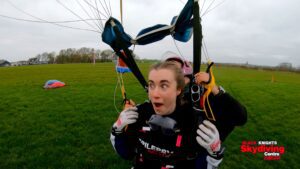Introduction from Dr Markus Reuber, editor-in-chief of Seizure
Seizure 22/7 has published Reoperation after failed epilepsy surgery
In 1886 Victor Horsley described three cases in which the presence of focal epilepsy allowed the patients’ physicians to localize the presence of a brain lesion and in which the removal of this lesion alleviated the patients’ epileptic seizures. Horsley’s paper marked the beginning of the “heroic” age of epilepsy surgery – in which other neurosurgeons such as Fedor Krause and Otfrid Foerster’s learned as much about surgical techniques (and complications) as about the localization of brain function (1). Whilst the doctors are much better known, the true heroes of this first age of epilepsy surgery were the patients who underwent highly experimental procedures with very uncertain outcomes.
The (second) “scientific” age of epilepsy surgery was characterized by the careful mapping of brain functions and description of surgical approaches by people such as Wilder Penfield and Herbert Jasper of the Montreal School, but also the work of Jean Talairach and his collaborators in France. Despite of the great strides made in this era epilepsy surgery remained very hazardous for patients – as demonstrated by patients such as H.M.
For the last 30 years, we have been in the (third) “clinical” age of epilepsy surgery. This surgical intervention has now become a fairly routine procedure. The evaluation of patients has been refined by technical advances during this period but the basic strategies of pre-surgical evaluation have not changed much. Several thousand patients have undergone epilepsy surgery worldwide, and a randomized controlled study has demonstrated the effectiveness of this treatment (at least for temporal lobe epilepsy) (2).
However, as epilepsy surgery has come of age and as patients who have undergone this treatment become older and more plentiful, new questions about epilepsy surgery arise – what about the very long term outcomes of epilepsy surgery (in terms of seizure control, cognition and co-morbidity)? – And what about the role of further surgery when a first operation has failed to control seizures?
In this issue of Seizure two papers address the second of these questions. The first is a paper by Jung et al. reporting the experience of one epilepsy surgery centre with re-operations (3). The second is my Editor’s Choice from this issue of Seizure: a review summarizing all previous case series of patients who have been re-operated after their initial epilepsy surgery failed to control seizures (4). Both papers suggest that re-operations are worth considering in carefully selected cases (however, it would be better to minimise the need for re-operations by meticulous presurgical work-up and surgical technique first time round!).
[1] Feindel, W., Leblanc, R., De Almeida, A. N. Epilepsy Surgery: Historical Highlights 1909–2009. Epilepsia 2009;50(S3):131-151.
[2] Wiebe, S., Blume, W. T., Girvin, J. P., Eliasziw, M. for the Effectiveness and Efficiency of Surgery for Temporal Lobe Epilepsy Study. A Randomized, Controlled Trial of Surgery for Temporal-Lobe Epilepsy. New England Journal of Medicine 2001;345:311-318.
[3] Jung, R., Aull-Watschinger, S., Moser, D., Czech, T., Baumgartner, C., Bonelli-Nauer, S., Pataraia, E.. Is reoperation an option for patients with temporal lobe epilepsy after failure of surgery? Seizure 2013….(insert details)
[4] Surges, R., Elger, C.E.. Reoperation after failed epilepsy surgery. Seizure 2013:22:493-501.
Full text of Reoperation after failed epilepsy surgery




